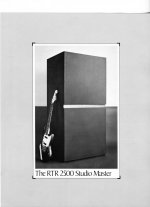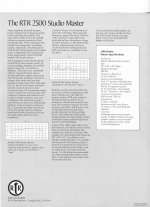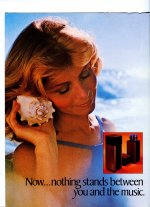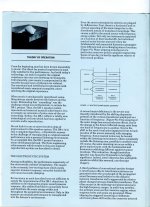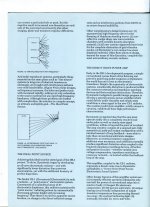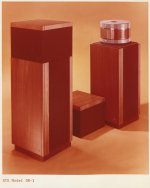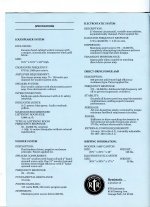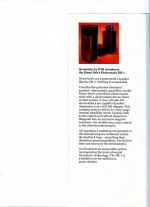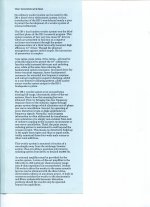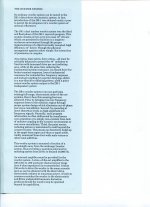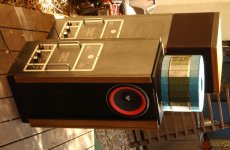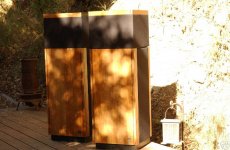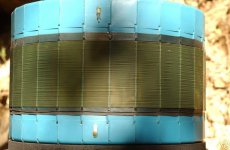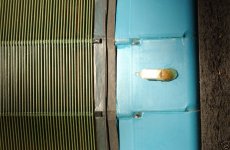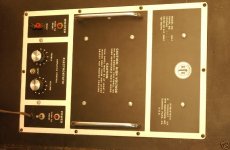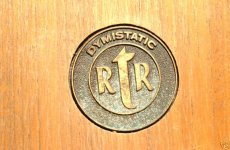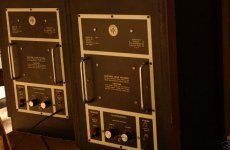David,
Interesting link, thanks. I like this quote:
"I had occasion to do some design work at RTR and asked some of the insiders what had happened to the DR-1. Their story was that manufacture of the circular electrostat had been the responsibility of single individual. She asked for a small raise—perhaps it was for $1.00 per hour more. The raise was denied, she left, and no subsequent worker could match the original design. After the departure of the "artisan"who assembled the electrostats, no two of the DR-1's panels ever matched."
From the rest of the description, it seems that the cylinder was used from 300Hz up. It must have been segmented to radiate from ever smaller areas as the frequency increased. The description is not clear, but I'm guessing that the facets might have had resistively-coupled segments giving progressive RC roll-offs. The inner-most area of each facet might have made a vertically-narrow "tweeter ring" going around the cylinder, getting the full spectrum, while larger rings above and below this central ring might have gotten successively more rolled-off signals. This is just a "pro forma" guess. Does anyone have a better guess, or actually know something more?
Interesting link, thanks. I like this quote:
"I had occasion to do some design work at RTR and asked some of the insiders what had happened to the DR-1. Their story was that manufacture of the circular electrostat had been the responsibility of single individual. She asked for a small raise—perhaps it was for $1.00 per hour more. The raise was denied, she left, and no subsequent worker could match the original design. After the departure of the "artisan"who assembled the electrostats, no two of the DR-1's panels ever matched."
From the rest of the description, it seems that the cylinder was used from 300Hz up. It must have been segmented to radiate from ever smaller areas as the frequency increased. The description is not clear, but I'm guessing that the facets might have had resistively-coupled segments giving progressive RC roll-offs. The inner-most area of each facet might have made a vertically-narrow "tweeter ring" going around the cylinder, getting the full spectrum, while larger rings above and below this central ring might have gotten successively more rolled-off signals. This is just a "pro forma" guess. Does anyone have a better guess, or actually know something more?
The DR-1 was truly ahead of its time. I just finished writing a response regarding my previous experiences with the RTR DR-1s in the comment section of the website listed below. There are aspects of it's sound qualities that I have never been able to duplicate in another speaker. I've owned many speakers since, including my current set up comprising of the Revel Ultima Salon surround system, yet still hold a very warm spot in my heart for DR-1s.
Borrowing a description from the referenced article, the circular electrostatic panel was designed so the entire panel was used for the lowest frequencies with smaller and smaller sections of the cylinder used for higher frequencies. So, from 300 Hz and up, the DR-1 was a direct-driven circular electrostatic speaker whose radiating area decreased with increasing frequency. I'm relatively sure RTR did use 27 elements for the electrostatic cylindrical top which played down to the mid 300 Hz range, using a 200 W direct drive amplifier and built-in electronic third order filter to power the electrostatic elements. This was mated to a unique combination of two side firing 10 inch woofers tied to an internal 12 inch woofer in a push pull configuration that used a passive second order crossover.
I found that a good quality amplifier rated at 200 W or so would easily drive the system to match with the output capabilities of the electrostatic amplifier. I used to have a book that listed all of the RTR products and specifications so I'll see if I can find more information.
Another great resource for RTR information would be the contact Martin Kari at Hi-Q Audio in Thousand Oaks. He was an Senior Engineer for RTR during their electrostatic development era.
Best regards.
Tommy G
(see page below for more RTR/DR-1 comments)
http://blog.ultimateavmag.com/industryvoice/206omni/
Borrowing a description from the referenced article, the circular electrostatic panel was designed so the entire panel was used for the lowest frequencies with smaller and smaller sections of the cylinder used for higher frequencies. So, from 300 Hz and up, the DR-1 was a direct-driven circular electrostatic speaker whose radiating area decreased with increasing frequency. I'm relatively sure RTR did use 27 elements for the electrostatic cylindrical top which played down to the mid 300 Hz range, using a 200 W direct drive amplifier and built-in electronic third order filter to power the electrostatic elements. This was mated to a unique combination of two side firing 10 inch woofers tied to an internal 12 inch woofer in a push pull configuration that used a passive second order crossover.
I found that a good quality amplifier rated at 200 W or so would easily drive the system to match with the output capabilities of the electrostatic amplifier. I used to have a book that listed all of the RTR products and specifications so I'll see if I can find more information.
Another great resource for RTR information would be the contact Martin Kari at Hi-Q Audio in Thousand Oaks. He was an Senior Engineer for RTR during their electrostatic development era.
Best regards.
Tommy G
(see page below for more RTR/DR-1 comments)
http://blog.ultimateavmag.com/industryvoice/206omni/
Ah, no, for several reasons. If you mean NO stators, just somehow-supported cylindrical diaphragms that would be driven by stepped-up audio voltages. The electrostatic forces would be too weak to generate much force across the distance of the cylinder, and worse, any motion thus generated would be full-wave rectified resulting in 100% THD. This is because the repelling would occur on both the positive and negative swings of the waveform. So instead of moving "in-out-in-out", the diaphragm would try to go "out-out-out-out". Other than that it would work fine 
Well, how about posting some photo's (covers off) and uploading the literature of your speakers?
I owned a number of RtR speakers, but never the DR-1's. They also produced a set of speakers (can't remember the model) the size of a refrigerator with a large woofer on the bottom and multiple drivers above in slot-loaded vertical arrays.
Cheers,
Dave.
I owned a number of RtR speakers, but never the DR-1's. They also produced a set of speakers (can't remember the model) the size of a refrigerator with a large woofer on the bottom and multiple drivers above in slot-loaded vertical arrays.
Cheers,
Dave.
Last edited:
rtr dr-1 speaker
i collect exotic speakers and have 2 pairs of dr-1 speakers.
the dr-1 is not like the former rtr panels hf 150,hf 100, hf50
seen in most speakers like the crown,or infinity wilson wham or fulton j,or rtrs own esr-6 and 15
the 27 panels are made as one unit and cannot be separated into stand alone panels
each panel `s rear radiation is absorbed into a foam wedge, the center of the panel is segmented for higher frequency's
the direct amp is not class g but a combo of lower turns wide bandwidth transformer
and a voltage amplifier
i have the schematics of the amp
i will post pictures tomorrow.
i collect exotic speakers and have 2 pairs of dr-1 speakers.
the dr-1 is not like the former rtr panels hf 150,hf 100, hf50
seen in most speakers like the crown,or infinity wilson wham or fulton j,or rtrs own esr-6 and 15
the 27 panels are made as one unit and cannot be separated into stand alone panels
each panel `s rear radiation is absorbed into a foam wedge, the center of the panel is segmented for higher frequency's
the direct amp is not class g but a combo of lower turns wide bandwidth transformer
and a voltage amplifier
i have the schematics of the amp
i will post pictures tomorrow.
At Bell Labs, I tested a phenolic-fabric fried-egg tweeter a local dealer had cornered the market in. Fabulous looking tone bursts and good freq response. So a group of us bought a case of 'em and I made a 120 degree array using 9 per side (which obviously simplifies the cross-over).
My experience is this: big tweeter power capacity is more worthwhile than I ever used to think; there definitely are moments in music where giant peaks occur in the high treble instantaneously (for example, female choirs). And apropos this thread, seriously multi-directional tweeting adds a welcome liveness to the sound of music at home as compared to the usual beaming treble (and esp. for us ESL folks).
Ben
My experience is this: big tweeter power capacity is more worthwhile than I ever used to think; there definitely are moments in music where giant peaks occur in the high treble instantaneously (for example, female choirs). And apropos this thread, seriously multi-directional tweeting adds a welcome liveness to the sound of music at home as compared to the usual beaming treble (and esp. for us ESL folks).
Ben
Last edited:
- Home
- Loudspeakers
- Planars & Exotics
- RTR DR-1 (circular electrostatic panel)
